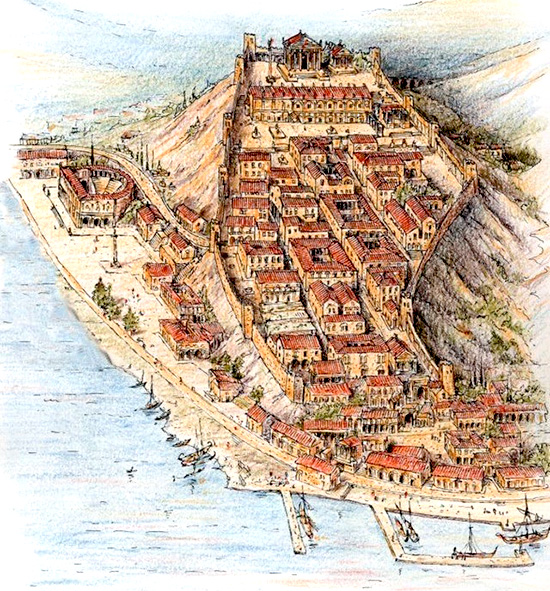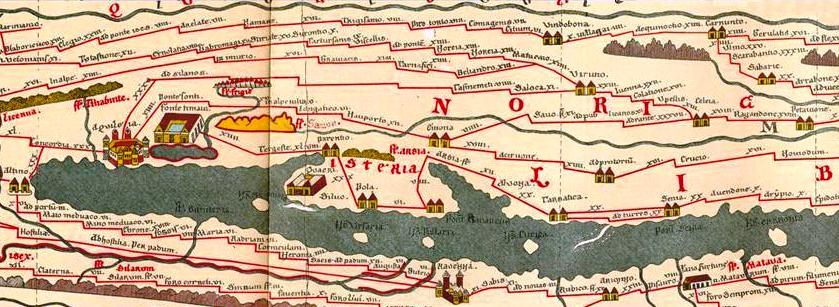Pre-Roman and Roman age
The territory where the city of Trieste currently stands and its karst hinterland became the permanent seat of man during the Neolithic. Starting from the late Bronze Age, the culture of the castellieri by pre-Indo-European peoples began to develop in the region. After the 10th century BC the presence on the Karst of the first Indo-European nuclei, the Istri, is documented, which however, in all likelihood, were not the first inhabitants of the future Trieste, despite the presence in the area of some castellieri that they themselves had built. The foundation of the first nucleus of the Roman Tergeste would seem to be attributable to the people of the Veneti or Paleoveneti, as evidenced by the Venetian roots of the name (Terg and Este) and by other important finds. However, Strabo traces the foundation of Tergeste back to the Celtic people of the Carni.
Following the Roman conquest (2nd century BC) the locality became a municipality under Latin law with the name of Tergeste, developing and acquiring a clear urban appearance already in the Augustan period.
It reached its maximum expansion during the principality of Trajan, with a population that, according to Pietro Kandler, must have been around 12,000 - 12,500 inhabitants (only in the sixties of the eighteenth century the city again reached the demographic consistency of the Roman age).
In the lower part of the hill of San Giusto towards the sea it is still possible to observe the remains of the Roman city, despite the numerous modern buildings that partially cover the view.
Two buildings offer us clear evidence of the importance of Trieste in Roman times: the theater, from the end of the 1st century BC. (but enlarged under Trajan), with a capacity of about 6,000 spectators, and the early Christian basilica, built between the fourth and fifth centuries, containing some superb mosaics, a tangible sign of the wealth of the local church and the city of Tergeste until late in life imperial.
On the hill of San Giusto some remains of the temples of Jupiter and Athena are still visible. Of the latter, some architectural structures have been preserved in the foundations of the cathedral, identifiable from the outside thanks to special openings in the walls of the bell tower and in the subsoil (through access from the Civic Museum of History and Art of Trieste).
Another Roman monument which has remained in fair condition up to the present day is the Arco di Riccardo, an ancient city gate built in the second half of the 1st century BC. In Barcola, Grignano and other towns along the coast, remains of villas belonging to the local aristocracy and mostly built in the 1st and 2nd centuries have been found.
The connection made by the emperor Flavius Vespasian between Trieste and Pola was important. The route called "Via Flavia" still remains.
Trieste had a port (in the Campo Marzio area) and a series of modest-sized ports of call along the coast: under the promontory of San Vito; in Grignano, near some patrician villas; in Santa Croce, etc.). The water needs of the city were satisfied at the time by two aqueducts: that of Bagnoli and that of San Giovanni di Guardiella.










